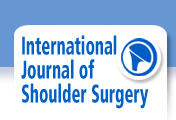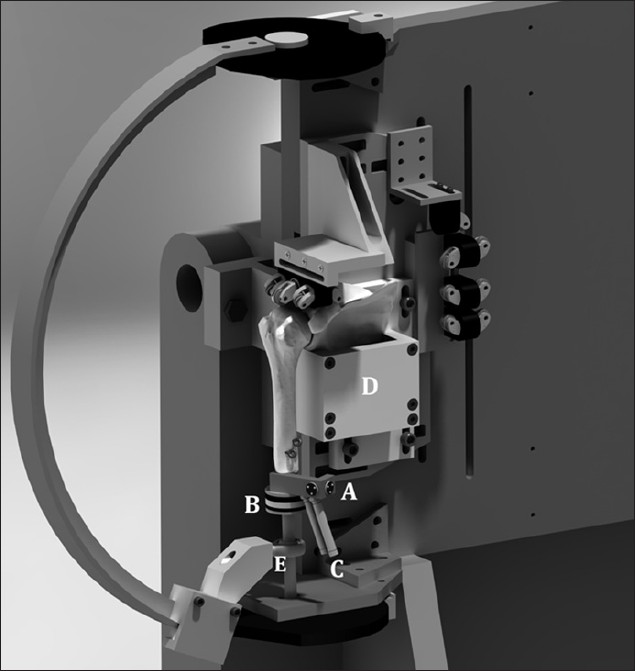
Figure 1: Computer rendering of a cadaveric shoulder specimen, with soft tissues removed for clarity, mounted to the custom shoulder stability testing apparatus in full ad duction. The apparatus is capable of independently controlling scapular elevation, and glenohumeral abduction, flexion, and humeral internal-external rotation. (A) Six degree of freedom optical tracking markers, (B) Interposed six degree of freedom humeral load cell, (C) Miniature actuators used to load long head of biceps and conjoint tendon, (D) Scapula mounting pot, (E) Spherical bearing used to connect humeral rod to apparatus without restricting glenohumeral kinematics
